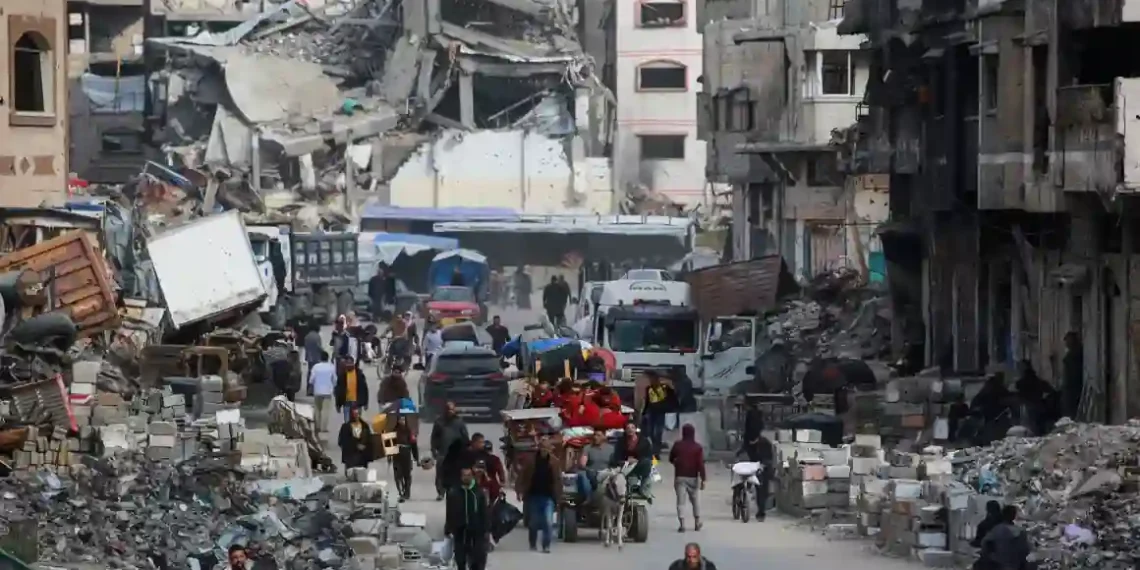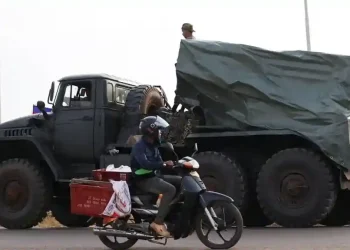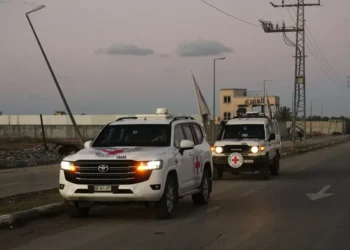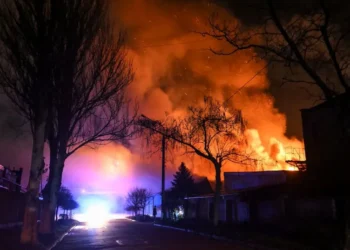Gaza Crisis Deepens: Hundreds of Thousands Forced Into Shrinking Zones as Israeli Offensive Expands
The humanitarian crisis in Gaza is reaching new extremes. As Israeli ground forces expand operations and redraw boundaries across the Strip, more than 400,000 Palestinians have been displaced in just three weeks, according to the United Nations.
The Israel Defense Forces (IDF) has issued 20 evacuation orders since mid-March, covering nearly two-thirds of Gaza, including all of Rafah. With entire neighborhoods deemed “no-go zones,” civilians have been pushed into overcrowded, makeshift camps along the Mediterranean coast — where tents now sit atop rubble and trash.
Faisal Jamal Faisal, a 30-year-old father, fled Al-Shujaiya with eight family members after repeated strikes hit nearby buildings.
“We don’t know where we’re going — we just walk,” he said. “My children have never known a normal life — no education, no play, no future.”
Abu Mohammad, 71, now blind and diabetic, summed up the mood from a crammed shelter in Gaza City:
“Life has no meaning or future. Even the past has been taken from us.”
Humanitarian access has nearly collapsed. The UN Office for the Coordination of Humanitarian Affairs (OCHA) warns that food, water, medicine, and shelter are dwindling fast:
- No aid has entered Gaza for six weeks
- Bakeries have closed
- 37% of essential medicines and over 50% of cancer drugs are out of stock
- Water production has plummeted
Sanitation is also a critical issue. “You see tents even among piles of garbage,” said Hatem Abdulsalam from Gaza City, describing clouds of mosquitoes and insects overwhelming the camps.
Israeli Defense Minister Israel Katz outlined a strategy aimed at creating a “buffer zone” by capturing large areas of Gaza and treating those who remain as combatants. Speaking from Gaza, he said:
“Many areas are being added to the State of Israel’s security zones, making Gaza smaller and more isolated.”
Israeli officials also suggested a long-term goal: encouraging the voluntary migration of Palestinians out of Gaza — echoing parts of former U.S. President Donald Trump’s controversial plan.
Prime Minister Benjamin Netanyahu told the White House that Israel was “enabling Gazans to freely choose where to go,” though Trump himself hasn’t actively pursued that vision publicly.
Israel ramped up the blockade in March to pressure Hamas into a new ceasefire deal, but progress has stalled. Even as Israeli forces declared parts of Hamas defeated, new rocket attacks were launched from southern Gaza this week.
UN human rights monitors reported at least 224 Israeli strikes on residential buildings and displacement tents since March 18, many of which killed only women and children. The UN continues to call for accountability and humanitarian access.
- Gaza’s livable area is shrinking fast
- Civilians are trapped between evacuation orders and airstrikes
- Aid is nearly non-existent, and hunger is rising
- Peace talks remain stalled, and violence continues
For many Gazans, hope is fading — and survival is now the only goal.
This article was rewritten by JournosNews.com based on verified reporting from trusted sources. The content has been independently reviewed, fact-checked, and edited for accuracy, neutrality, tone, and global readability in accordance with Google News and AdSense standards.
All opinions, quotes, or statements from contributors, experts, or sourced organizations do not necessarily reflect the views of JournosNews.com. JournosNews.com maintains full editorial independence from any external funders, sponsors, or organizations.
Stay informed with JournosNews.com — your trusted source for verified global reporting and in-depth analysis. Follow us on Google News, BlueSky, and X for real-time updates.














